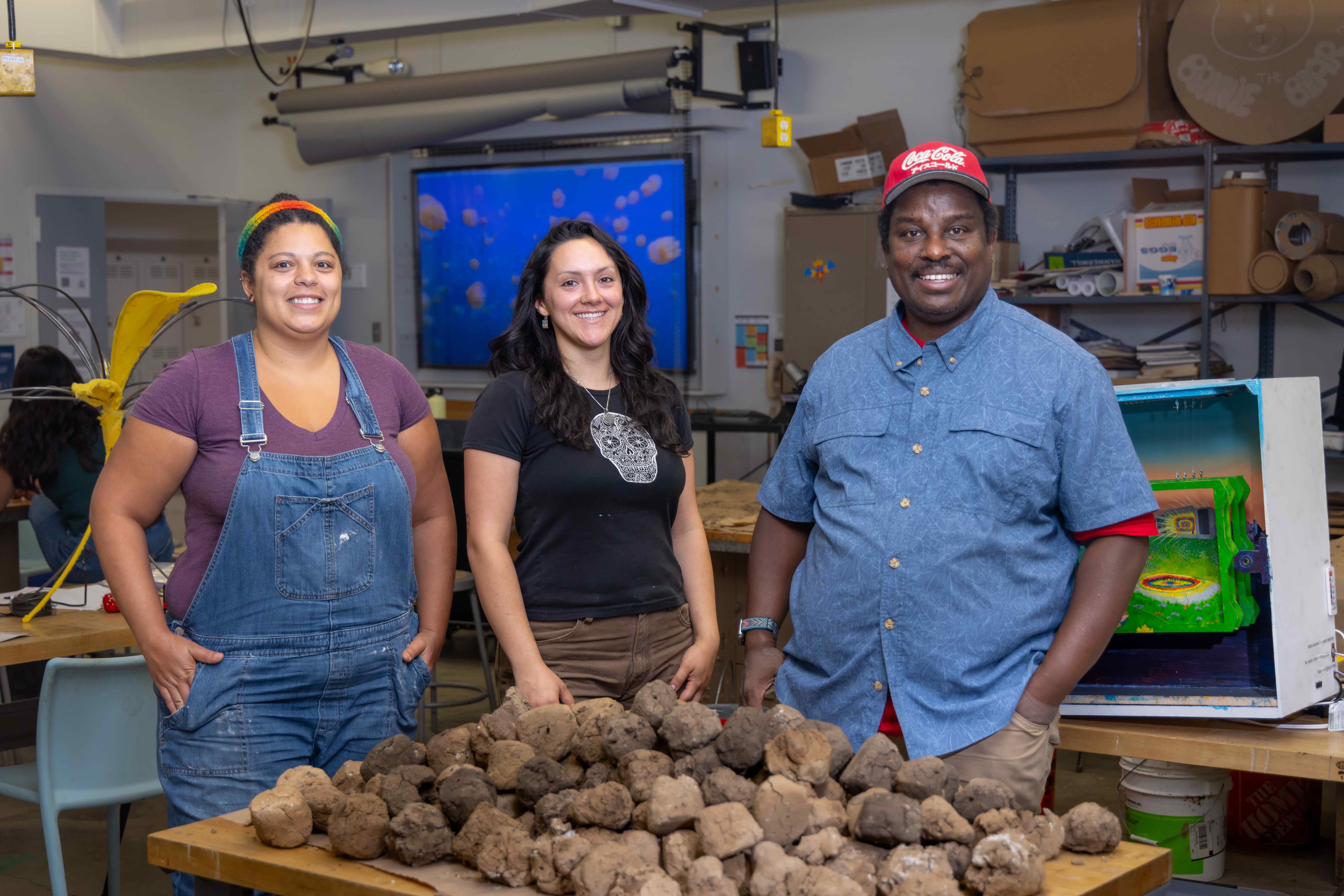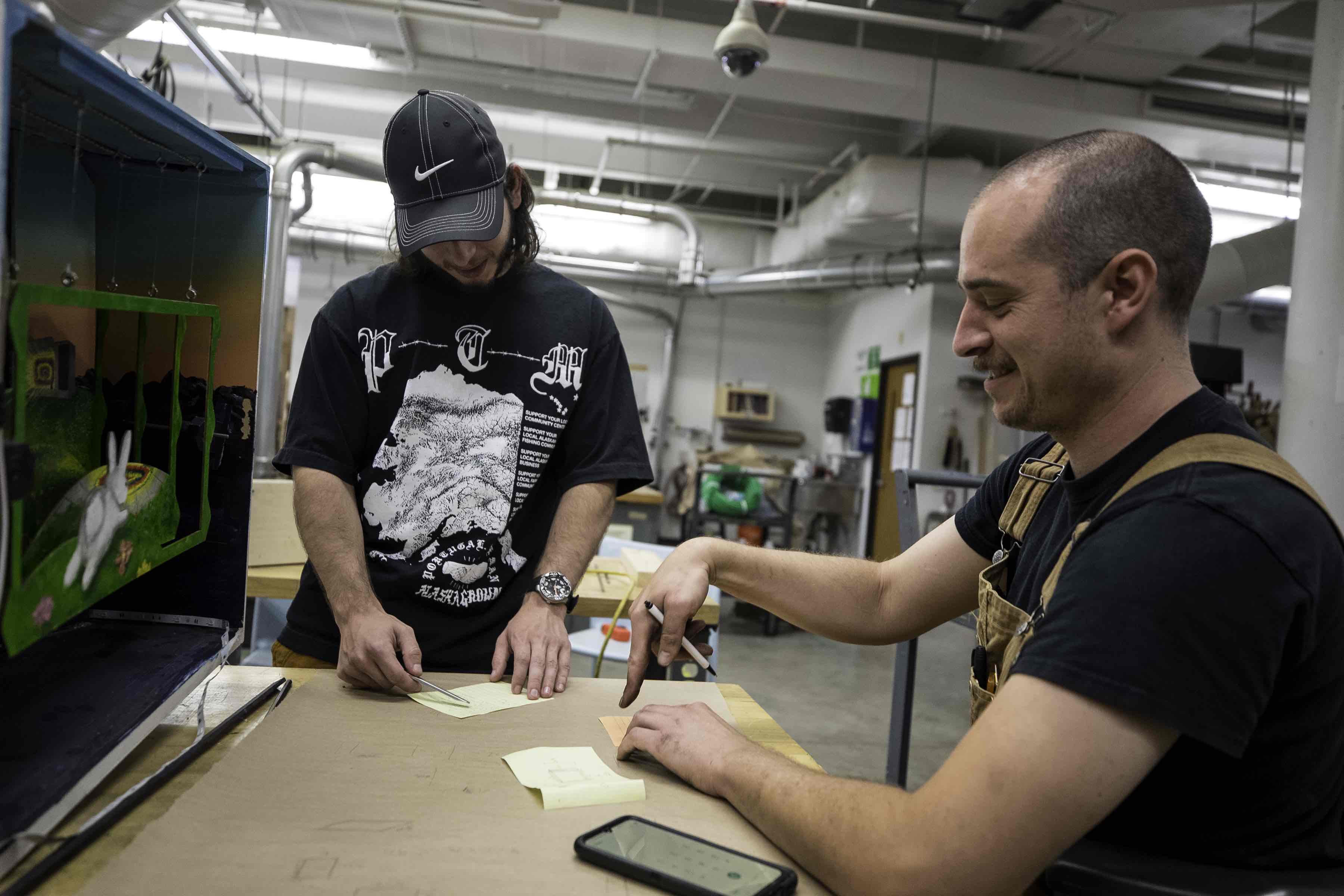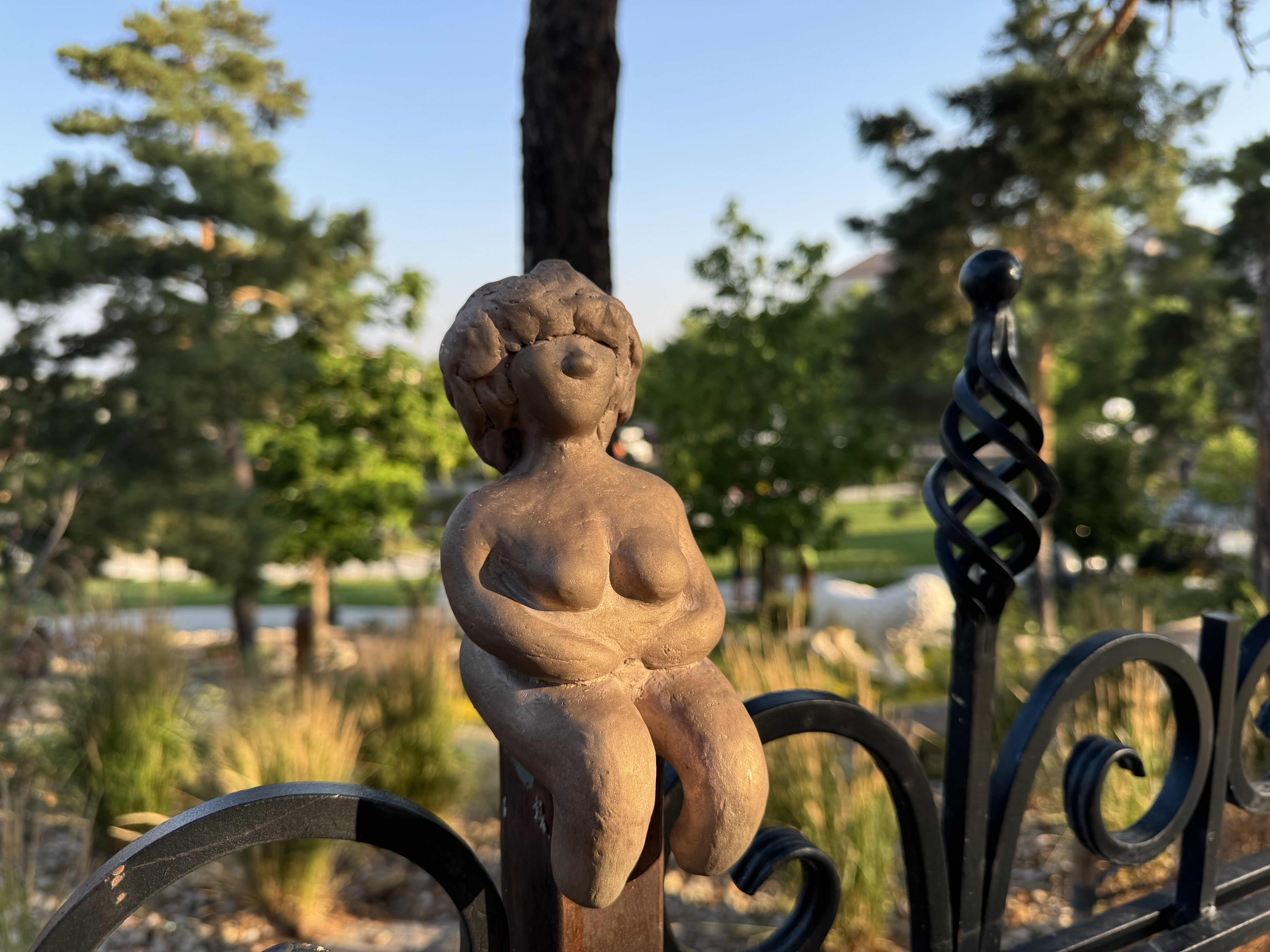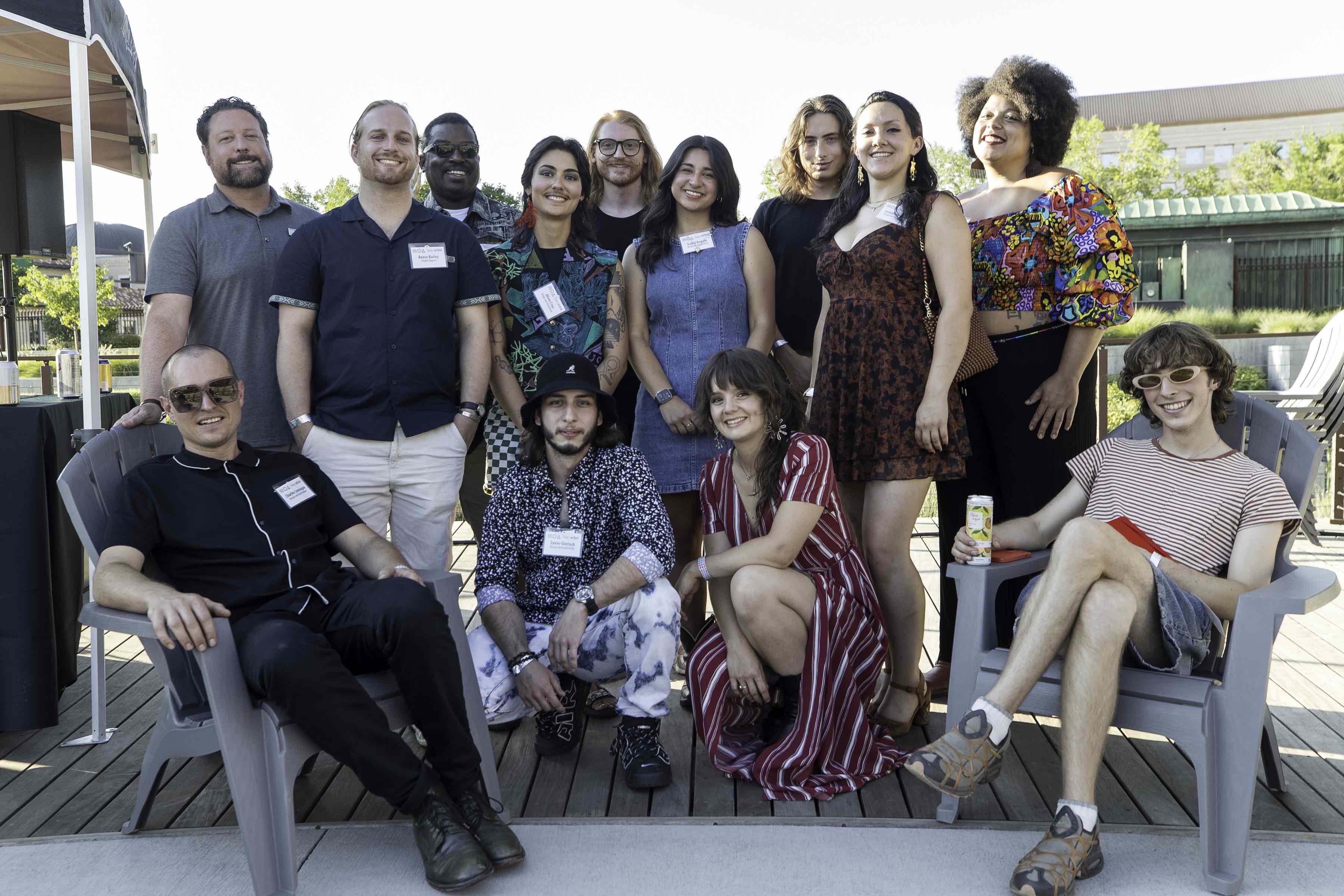Sculpting the Future: CU Denver’s Artists Shape Public Art
How the Museum of Outdoor Art's Design & Build Program Nurtures the Next Generation of Creators
Jasper Lipscomb | College of Arts & Media Aug 26, 2024
In a city whose notable locations are accompanied by surreal statues with bizarre lore, one must ask themselves “How did these get here? If I wanted to, how could I make one of these myself?” To answer the latter, the Museum of Outdoor Art (MOA) presented their annual Design & Build internship program this summer in partnership with CU Denver’s College of Arts & Media. Visual Arts student Josephine Clark and recent alumnus Christian Smith were among the eight artists selected for this year’s eight-week internship.
MOA’s current headquarters, the Marjorie Park at Fiddler’s Green, sit in Greenwood Village as ‘a museum without walls’ and hub for multi-disciplinary arts events. Pursuing their mission to ‘make art a part of everyday life,’ the MOA has curated works for public spaces in the Denver metro area for over thirty years, with more than twenty of those including the operation of Design and Build. The program offers an opportunity for young artists to create several collaborative and individual projects with the assistance of professional artists, like alumnus and instructor Walter Ware ‘16 and CAM’s own art practices professor Rian Kerrane. These working artists serve as a point of mentorship in the shared sculpture and fabrication studios at CU Denver. “If I was doing it on my own, I wouldn’t be where I am today,” says assisting fellow Charles Levesque, who himself was an intern in 2023. “I just think it’s so much easier. And you feel supported, and you feel safe, and you can bounce ideas off people.”

Josephine and Christian work with intern Michael Earle, formulator and nomenclator of the "earth beads," to shape them before baking.
With backgrounds in art practices and sculpture, Christian and Josephine spent the summer working with multiple mediums to exercise their abilities. “I’m always looking for different ways to experiment with what I want my art practice to look like. Like how to actually get paid for art.” Josephine says. “And there’s so many opportunities.” Denver is one of the only cities with a rule that allocates funds for public art from million-dollar construction projects, so Christian agrees, saying, “[If] you want to get into [creating] public art, this is the place to do it.” Josie will be graduating from CU Denver this coming May with a resume that includes co-curating an exhibition at the CU Denver Experience Gallery, but Design and Build is enabling her to work with motifs in new and exciting ways. “I just love working with my hands. I love public art. I love collaborative work.” Her hands, in fact, are what she just cast in bronze to create an ornate fence decoration, called a finial.

Assisting fellow artist Charles Levesque works with an intern.
Christian, a skilled sculptor who completed her BFA in spring while working as Vice President for the Arts Practices club, created what she called a “feminine form with a larger body” for her own finial. “Being a person with multiple marginalized identities, I don’t often see a lot of art that looks like me or people I love.” Despite these opportunities to inject some representation, it’s still an uphill battle to receive funding. “Denver Public Art is really good about bringing calls that encourage emerging artists, but they want to see you can do it. They don’t want to just give you four hundred thousand dollars.” Through Design and Build, Christian has been able to build her portfolio and prove she’s worth funding; all while being paid for her time.

Christian’s finial sitting on the fence around Marjorie Park.
These mediums use everything from metal casting industrial equipment to wax-melting pots on a hot plate, but the whole ordeal still reads like a feat of engineering. Walter feels mastery of these tools are one of the biggest factors young artists need to succeed. “Learning how to use some of these tools can be scary and big and feeling comfortable will then allow them to use other tools they may not have experience with when they go out into the professional world.” With this gear, interns can conceptualize their ideas and make them a reality in the same studio. “It’s like practical, but also beautiful," Josephine said.

Josephine discusses progress on "Inversion" with Micheal and fellow intern Isabel Angulo.
“I think the biggest thing that students learn is a sense of empowerment.” Walter says, now teaching in the same studio he learned in when he attended CAM. He’s since had his work in dozens of exhibitions, with one piece made a permanent fixture on the Auraria Campus. “Sometimes, you just have to apply and kind of be out there to notice where things are going.” Online call for arts and exhibition platform CaFÉ is a resource he recommends young artists check regularly. “See what’s posted, talk to your faculty, talk to some of the different staff and talk to your friends to try and develop a network of [exhibitions that are out there].” Submitting for these calls is important, but Design & Build helps develop the skills needed to have a competitive application. Walter adds, “And while you’re here, build up a network of people to help guide you along the way.”

2024 Design and Build interns pose with supporting artists, instructors, and MOA staff at the opening reception of their work.
The program is open to undergrad, graduate bound, and emerging artists. Interns from CU Denver will receive support from the Experiential Learning Center and can earn college credit for their participation. Those coming from outside of Denver can also be eligible for reduced cost housing from CU Denver’s Housing & Dining department. See the Design and Build internship page for full details and application information for the 2025 edition of the program.